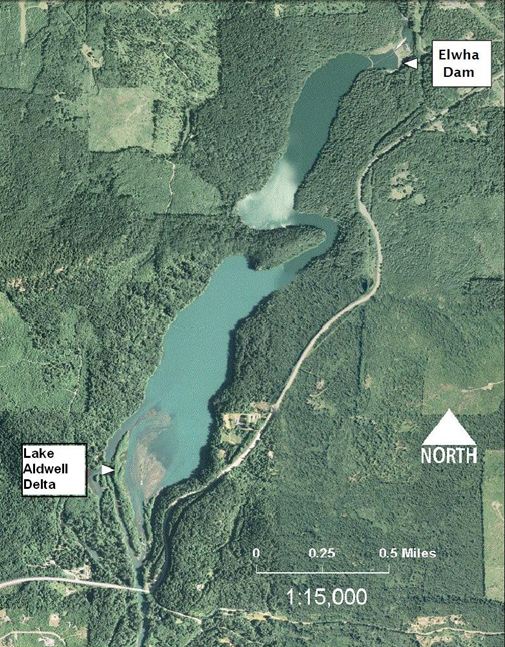 The demolition of the two Elwha River dams has finally begun, after so many years of work by a great many individuals and groups. I first heard of the Elwha River when I attended the UW College of Fisheries in the early 1970’s and read about its role in the development of the Port Angeles area through the production of cheap electrical power, but at the great cost of its magnificent fishery resource. Since the dams lacked fish ladders, all but the lower 5 miles of the Elwha River were blocked off to five species of salmon, steelhead, bull trout and sturgeon. The spawning habitat in the still accessible lower river degraded overtime as floods removed the smaller sized spawning gravels, while the dams prevented their replenishment from upstream sources. Fluctuations in river flow in response to power generation needs, resulted in dewatered redds, and stranded fry and juveniles,
The demolition of the two Elwha River dams has finally begun, after so many years of work by a great many individuals and groups. I first heard of the Elwha River when I attended the UW College of Fisheries in the early 1970’s and read about its role in the development of the Port Angeles area through the production of cheap electrical power, but at the great cost of its magnificent fishery resource. Since the dams lacked fish ladders, all but the lower 5 miles of the Elwha River were blocked off to five species of salmon, steelhead, bull trout and sturgeon. The spawning habitat in the still accessible lower river degraded overtime as floods removed the smaller sized spawning gravels, while the dams prevented their replenishment from upstream sources. Fluctuations in river flow in response to power generation needs, resulted in dewatered redds, and stranded fry and juveniles,
and on occasion adult fish when project shut down completely. I was a new to Washington State, having driven out from Michigan to further my education in the early 1970’s. I knew little about salmon, steelhead and or any of the other fish that migrate from the ocean to rivers to spawn. How could this happen, and why hasn’t anyone done someone to fix the problem caused by the dams, I naively asked? A “public policy decision” was the response. Electricity was needed to fuel the development of Port Angeles. Salmon and steelhead were plentiful in the region and could be obtain elsewhere. Fish ladders were expensive and had never been constructed at dams as high as the 105’ tall Elwha Dam. Fifteen years later, my path once again crossed the Elwha River, this time as a biologist with a resource agency. Various conditions had changed, leading to a window of opportunity for restoring anadromous fish runs to the Elwha River. Salmon and steelhead populations were in serious declines, while the upgrade of a Bonneville Power Administration transmission line eliminated Port Angeles dependency on the power produced by the two Elwha Dams. Equally important was the change in public policy that reduced the bias that heavily favored energy producers that made it nearly impossible to get meaningful mitigation to restore the fishery and wildlife resources affected. I am waiting excitedly to see the salmon, steelhead and other anadromous fish return to the Elwha River when dams are completely removed. I’ve had
the pleasure to hike and fish in this beautiful watershed, and it will be even more spectacular with return of leaping salmon and steelhead. Check out the Olympic National Park webcams showing the ongoing demolition of the Elwha and Glines Canyon dams at http://www.video-monitoring.com/construction/olympic/js.htm.

